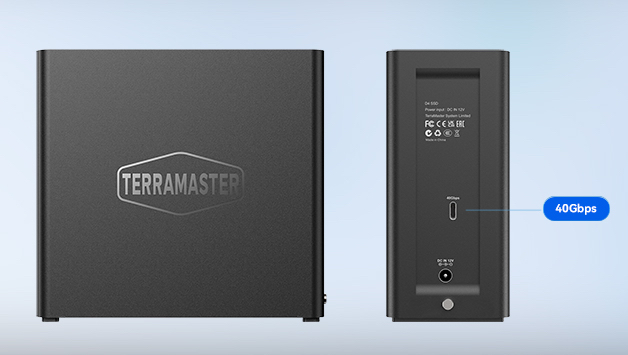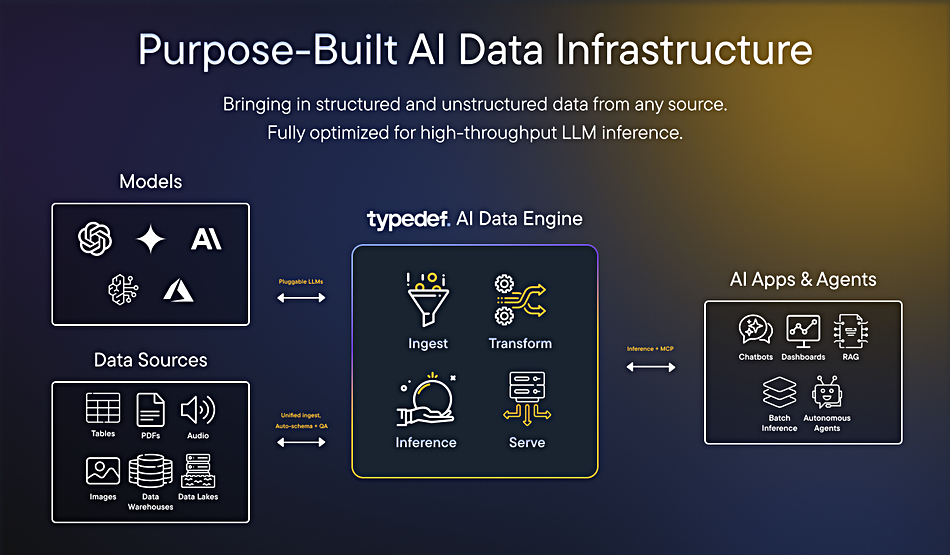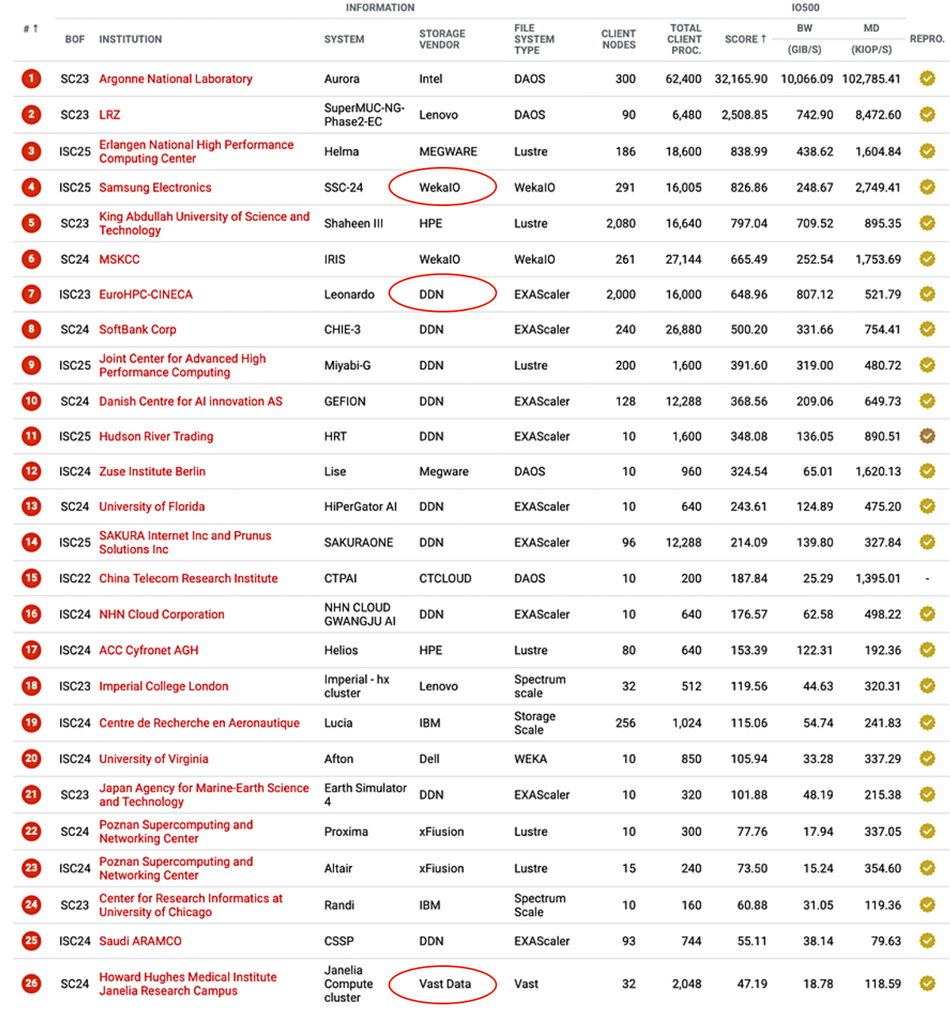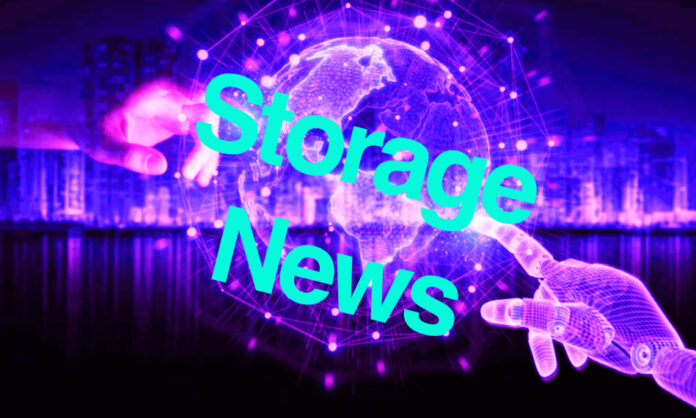Arctera, Wasabi Technologies, and distributor TD SYNNEX have launched a joint, channel-exclusive data protection offering. It combines Arctera Backup Exec with Wasabi Hot Cloud Storage, available through a single SKU via TD SYNNEX, providing turnkey integration with seamless end-to-end protection across physical, virtual, cloud, and SaaS environments. There is flat pricing with no egress fees, stronger margins and simplified sales motion for channel partners plus streamlined procurement and deployment through one order form, one invoice, and one vendor relationship.
…
Assured Data Protection (Assured), a UK-based IT managed services provider (MSP) for cloud data protection solutions using Rubrik’s software, announced the expansion of its operations into France bringing enterprise-level cyber recovery solutions to mid-market and enterprise businesses there. In France, Assured has partnered with I-TRACING, a managed cybersecurity services provider with a security operations center (SOC) managed services offering. The SOC protects complex environments on a 24/7 basis, leveraging an integrated international “follow-the-sun” operating model. Through the partnership, I-TRACING is now able to offer Rubrik’s data protection platform as a managed service through Assured’s second site data replication infrastructure.
…
Ataccama says it enables businesses to turn unstructured content such as contracts, invoices, and PDFs into structured and actionable data that can be analyzed using natural language prompts, through an integration of its unified data trust platform Attacama ONE with Document AI on the Snowflake marketplace. Enterprises can turn documents into structured records by using natural language prompts such as “What is the effective date of the contract?” which are processed by Snowflake’s Arctic-TILT large language model to create structured outputs written directly into Snowflake tables.
Ataccama ONE connects to these tables to profile the data, apply quality checks, and manage governance policies on the structured outputs. It also tracks how the data flows into analytics, reporting, and AI workflows by capturing lineage at the table level. Additional metadata about the original documents can be added to enrich traceability if needed.
…
AWS has enabled SAN booting and you can SAN boot your Amazon EC2 enterprise environments from Amazon FSx for NetApp ONTAP. We’re told it can save serious money for customers when they have hundreds to thousands to hundreds of thousands of boot volumes. Or when building HA/DR storage with improved resiliency and OS change management. Read more here.
…
Broadcom announced GA of VMware Cloud Foundation (VCF) 9.0. It says: “VCF 9.0 introduces a completely new architecture that simplifies operations, boosts performance and resiliency, and delivers a consistent cloud operating model across on-premises, edge, and managed environments. The release includes significant updates across both the core platform and advanced services, giving IT and developer teams a unified, secure foundation to build, run, and scale traditional, containerized, and AI workloads.”
Broadcom is also delivering:
- Private AI Foundation with Nvidia: Multi-tenant GPU-as-a-Service, air-gapped deployment, model runtime, and agent builder tools.
- Live Recovery: Cyber and disaster recovery with isolated clean rooms and up to 200 immutable VM snapshots.
- Avi Load Balancer: Self-service load balancing, lifecycle automation, and VPC-aware deployments.
- VMware vDefend: VPC-aware microsegmentation, self-service policy control, and centralized IDS/IPS policy management.
- Data Services Manager: Enterprise PostgreSQL/MySQL with SQL Server in tech preview, integrated for DBaaS delivery.
…
Tom’s Hardware reports that Chinese AI companies are smuggling hard drives to Malaysia in order to train their AI models without technically breaking the export controls that the US has placed on advanced Nvidia chips.
…
Cyber resilience supplier Commvault announced a partnership with Kyndryl to help customers recover faster, advance cyber resilience, and navigate the evolving regulatory landscape. This will augment Kyndryl’s portfolio of cyber resiliency services, which encompasses Incident Recovery Services, including Cyber Incident Recovery, Managed Backup Services, and Hybrid Platform Recovery. Commvault and Kyndryl will collaborate with Pure Storage to assist organizations in complying with evolving and rigorous regulations, including the European Union’s DORA, NIS2, PSD2, as well as NYDFS NYCRR 500 and Australia’s APRA CPS 230.
The services from Commvault and Pure Storage deliver a modular, four-layer architecture that streamlines the compliance process and accelerates recovery across hybrid cloud environments:
- Clean Recovery Zone: A secure environment for forensic analysis, validation of clean backups, and staged recovery operations.
- Production Rapid Restore: Fast, reliable restoration of large datasets using Pure Storage FlashBlade, with immutability powered by S3 Object Lock and SafeMode.
- Immutable Snapshot Recovery: Application-consistent snapshot replication with Commvault IntelliSnap and Pure Storage FlashArray, enabling rapid restoration of Tier-1 workloads.
…
Private equity firm Haveli Investments has an agreement to acquire NoSQL database supplier Couchbase in a $1.5 billion all-cash transaction.
…
Cloud file services supplier CTERA says it’s the first hybrid cloud storage supplier to support the Model Context Protocol (MCP). This allows enterprises to connect large language models (LLMs), including assistants like Claude, AI IDEs (e.g. Cursor), and internally developed agents, directly to private data, without compromising security or compliance. Until now, connecting LLMs to private files meant sacrificing control or building custom integrations. The Anthropic-developed MCP solves this by providing a structured, permission-aware interface.
CTERA has embedded this new capability into the CTERA Intelligent Data Platform, enabling users to look up, summarize, retrieve, manage, and create files using natural language, all while enabling IT and security teams the ability to maintain full control over access, auditing, and encryption. With the integration of MCP into the CTERA Intelligent Data Platform, users can automate routine file management tasks and eliminate the need for tedious folder navigation or coding skills, allowing users to leverage AI-driven actions to drive productivity efficiencies.
…
Diskover announced the closing of a $7.5 million seed funding round, and the launch of partnerships with both NetApp and Snowflake, each of which is also among Diskover’s new investors. It has acquired data intelligence and orchestration platform company CloudSoda.
…
Postgres supplier EnterpriseDB (EDB) updated its Postgres AI (EDB PG AI) offering. EDB PG AI unifies relational and non-relational data in a single system, featuring automatic pipelines and built-in development tools that automate and operationalize data for AI. It now gets low-code/no-code simplicity with AI pipeline creation in days, not months. In just five lines of code, users can set up an AI pipeline that automatically syncs embeddings with source data, ensuring an always-up-to-date AI knowledge base without costly infrastructure maintenance. It supports Nvidia GPU servers, NeMo retriever, and NIMS microservices. It also gets sovereign hybrid Postgres data estate management and observability. With 200-plus built-in metrics and intelligent recommendations, teams can identify and resolve issues 5x faster, boost application performance by up to 8x, and optimize infrastructure – no DBA expertise required.
…
Data orchestrator Hammerspace says its software is available on the Oracle Cloud Marketplace and can be deployed on Oracle Cloud Infrastructure (OCI). In recent OCI performance benchmarks, the Hammerspace Tier 0 solution delivered 2.5x faster read bandwidth, 2x higher write throughput, and 51 percent lower latency when compared to the same client servers connected to external networked storage running on OCI. These results were achieved using OCI bare metal shapes, with zero custom software or hardware, leveraging the Hammerspace Tier 0 solution, which utilizes low-latency NVMe storage local to OCI GPU VM shapes. Read more here.
…
Hitachi Vantara announced that Turkey’s DestekBank has deployed its Virtual Storage Platform One Block (VSP One Block) to support its retail banking expansion and enhance digital service delivery. The VSP One system combines high-speed NVMe architecture with adaptive data reduction to deliver fast, efficient, and reliable performance at scale. Since deploying VSP One Block, DestekBank has seen a 35 percent increase in application performance, a 25 percent decrease in datacenter energy consumption, and a 30 percent reduction in storage management workload, freeing up IT resources to focus on more strategic priorities. With a 4:1 data reduction ratio, the bank has significantly optimized storage efficiency and lowered total cost of ownership by approximately 20 percent. DestekBank expects a full return on investment within 18 months of implementation.
…
A NERSC (National Energy Research Scientific Computing Center) operated by Lawrence Berkeley National Laboratory for the United States Department of Energy Office of Science, has a coming Doudna supercomputer, a Dell-built system to be delivered in 2026 and based on Nvidia’s CPU and GPU Vera Rubin platform. It will handle AI training, traditional simulation, streaming sensor data, and analysis in one pipeline, without forcing the user to break the workflow into separate, asynchronous stages. It has two types of storage systems. One is IBM’s Storage Scale, a traditional high-performance parallel file system for modeling and simulation workloads running at scale. The second has not been revealed but – heavy clue alert – we can read about Doudna in a VAST Data blog, which says it “includes support for quality-of-service-driven workloads, those that involve streaming data, inference, or time-sensitive experimental inputs.” More will be revealed at Nvidia’s GTC in 2026.
…
IBM Red Hat Ceph 8.1 is out and has some pretty cool new features. It enables support for two-site and tiebreaker stretch-mode clusters.
With this capability, clients can lose a site without impact to the availability of their data resources. See more details here.
…
The Crusoe GPU server farm operation launched Data Mobility Services (DMS) using Lightbits high-performance block storage. DMS is a standalone service that runs in a dedicated container outside the Lightbits cluster, managing the movement of volumes and snapshots. It uses a Thick Clone feature to create volumes by leveraging all available resources across the cluster, and so streamline image creation and management for AI Cloud environments. Crusoe’s customers have the flexibility to build from custom image templates and take snapshots at any stage of the AI data pipeline. DMS capability enhancements are already in the pipeline, to include asynchronous replication, incremental copies, and advanced data protection features. A Crusoe blog tells you more.
…
Lightbits Labs, inventor of the NVMe over TCP protocol natively designed into their high-performance block storage solution, published a reference architecture (RA) with AMD and using Ceph, for the industry’s first scalable, highly available, disaggregated, software-defined storage solution that simplifies and accelerates Kubernetes infrastructure deployments. It features the “seamless integration of Lightbits block storage into existing Kubernetes deployments, without requiring significant re-architecting, which enables a smooth upgrade path to software-defined, high-performance block storage.” You can download the reference architecture available on the Lightbits Labs website.
…
Regatta, the Israeli startup building a scale-out, transactional (OLTP), analytic (OLAP) relational database (OLxP) with extensibility to semi-structured and unstructured data, recently got some foundational patents granted, which allowed it to add more technology data online in CTO Erez Webman’s blogs, Regatta’s Architecture: A Bird’s Eye View and Regatta’s Concurrency-Control Protocols.
Regatta enables frequent and ad hoc, complex, distributed queries on live, up-to-the-second transactional data, without degrading performance. It guarantees Linearly Scalable OLTP and OLAP performance, strong distributed ACID, on hyper-scalable clusters with huge capacities. In many cases, Regatta eliminates the need for ETL and data warehouse. It’s excited about the role Regatta plays in Transactional Agentic AI where agents must act on real-time, record-level data – in addition to the less specific and more generic outputs that’s generally based on stale or archived data.
Its broader vision is to collapse the data stack into a single, elastic “pool” of commodity compute, storage, and networking. No more silos of a variety of operational and analytical stores. All workloads operate directly on the same data, on the same “pool,” scaling capacity or performance elastically as needed, without the complexity of ingestion pipelines or duplication (or quadruplication, or more), and without the related costs and complexities. Always with linearly scalable very high performance, and strong transactional consistency (ACID) guarantees.
…
SNIA Storage Management (SM) says Swordfish v1.2.8 is now available as a SNIA Standard and will be submitted to the ISO process. Swordfish provides a standardized approach to manage storage and servers in hyperscale and cloud infrastructure environments – leading to streamlined implementation, scalability and increased cost savings. It DMTF Redfish specification – utilizing the same easy-to-use RESTful interface, along with JavaScript Object Notation (JSON) and Open Data Protocol (OData) – to seamlessly manage storage equipment and storage services in addition to servers. Swordfish v1.2.8 includes expanded content for NVMe device management to support joint work with the OpenFabrics Alliance and DMTF.
…
Starburst, which uses Trino open source distributed SQL to query and analyze distributed data sources, has been recognized as a Leader and Fast Mover in the newly released 2025 GigaOm Radar for Data Lakes and Lakehouses report. This marks the third consecutive year that Starburst has earned a leadership position in this industry report.
…
HCI vendor StorMagic has announced a virtual OEM (V-OEM) agreement with HPE involving the ProLIantCompute DL145 Gen 11 server. The system includes HPE iLO silicon root of trust, HPE Compute Ops Management, and features an AMD EPYC 8004 Series processor that combines with StorMagic SvHCI to deliver an HCI setup designed for retailers. Customers with decentralised business applications and data can easily size, order and receive integrated, purpose-built hyperconverged infrastructure (HCI) solutions designed for simplicity, reliability, high availability (HA) and affordability, and designed around customer compute and storage capacity requirements. StorMagic will be showcasing the new integrated solution at HPE Discover 2025 in Las Vegas.
…
TerraMaster announced its D4 SSD, a four-bay all-flash direct-attached storage (DAS) enclosure designed for media creators, filmmakers, and professionals seeking speed and flexibility. It has USB 4 support delivering up to 40 Gbps bandwidth. When equipped with four M.2 SSDs (such as Samsung 990PRO 4 TB) and configured as RAID 0 via macOS Disk Utility, it achieves read/write speeds of up to 3,224 MBps. In single-disk operation, read speeds can reach 1,608 MBps. It’s fully compatible with Thunderbolt 3/4/5 and USB 4/3.2/3.1/3.0 protocols.

…
Startup Typedef has gained $5.5 million seed funding to develop its software technology to help turn AI pilot projects into production-ready workloads. Typedef is led by co-founders Yoni Michael, who sold his datacenter analytics company, Coolan, to Salesforce in 2016, and Kostas Pardalis. The company says it’s “driven by a belief that inference is the new transform, and building on their deep experience leading data infrastructure teams at cloud-first companies such as Salesforce, Tecton and Starburst Data, Typedef set out to build a solution from the ground-up that can handle mixed AI workloads at scale with equal efficiency, predictability, and performance.”
Michael said: “It is extremely difficult to put AI workloads into production in a predictable, deterministic and operational way, causing most AI projects to linger in the prototype phase – failing to achieve business value or demonstrate ROI.”

“The fact is, legacy data platforms weren’t built to handle LLMs, inference, or unstructured data. As a result, the workaround has been a patchwork of systems, aging technologies and tooling, or DIY frameworks and data-processing pipelines that are brittle, unreliable, and don’t scale. Typedef is righting these wrongs with a solution built from the ground up with features to build, deploy, and scale production-ready AI workflows – deterministic workloads on top of non-deterministic LLMs.”
…
VergeIO announced VergeIQ, a fully integrated enterprise AI infrastructure offering “enabling enterprises and research institutions to securely, efficiently, and easily deploy and manage private AI environments.” It is integrated as a core component of VergeOS. Customers can select and deploy various Large Language Models (LLMs)—such as LLaMa, DeepSeek, and Falcon—and immediately begin using them on their own data within VergeOS’ secure, tenant-aware infrastructure. An Early Access Program begins in July 2025 with GA in August 2025.
…
Cloud object storage supplier Wasabi announced its achievement of ISO/IEC 27001 certification – the global standard for information security management systems. The internationally recognized ISO/IEC 27001 certification ensures Wasabi’s security architecture is robust and protects petabytes of mission-critical data across healthcare, education, government, financial services and media sectors globally.
…
Software RAID supplier Xinnor says its xiRAID product is being used in the third highest-scoring full production list IO500 system. It is in the Erlangen National High Performance Computing Center which uses the Lustre file system. Xinnor partner MEGWARE was responsible for the deployment. The AlmaLinux 9.4 OS is available as open source. The Lustre 2.16.1 file system is available as open source. Xinnor’s xiRAID Classic v4.2 is proprietary.

Xinnor tells us: “We worked closely with MEGWARE to design the architecture of this cluster, with the goal of maximizing performance, its stability over time and without compromising reliability. In fact, xiRAID takes care of drive protection at node level but also the fail-over and fail-back in case of a server node failure.” It claimed: “Not only is this cluster faster than any DDN, Weka, VastData, or Hammerspace clusters, but it is also one of the most cost-effective deployments appearing on the entire list as it is based on Lustre community version and commodity hardware.”
…
Xinnor announced a high-availability BeeGFS parallel file system validated design with Western Digital’s OpenFlex Data24 4000 Series NVMe-oF storage system. Xinnor’s xiRAID Classic provides automatic failover capabilities through Pacemaker Cluster Shell integration. The system uses WD’s RapidFlex network adapters and fabric bridge devices to provide 12 ports of 100 GbE connectivity. The architecture supports both RoCE (RDMA over Converged Ethernet) and TCP connections. Tech specs include:
- Up to 1,474.56 TB capacity in a 2U unit
- Support for up to 12 hosts without requiring a switch
- PCIe Gen 4 performance throughout the chassis
- Measured performance of 61.5 GBps read and 24.4 GBps write throughput
The complete solution brief is available here and the detailed reference architecture can be accessed here.








